Description
The so-called reunion boom comes periodically. For some reason, a former band breaks up and then reunites after several decades. There may be some enjoyment in the nostalgia and maturity that comes with it, but it is difficult to find any meaning beyond sentimentality. There is no denying that there is a certain prejudice that reunions are cheap, with commercialism lurking in the background. Of course, some reunions are meaningful. For example, I think it was very meaningful when Hitomi Minoru reunited with the band members for the first time in over 30 years to reunite with The Tigers. However, I thought that The Beatles were the only ones who would never reunite. There was no meaning to reunite, and since the four members were not together, it was thought that it was impossible to use the word reunion. Therefore, when The Beatles released new songs in 1995 as part of the Anthology Project, fans at the time welcomed it, but also felt mixed emotions. There were rumors of a plan to record the official history of The Beatles from an early stage, and even though the documentary was planned to be titled “THE LONG AND WINDING ROAD”, it was shelved in the end. “SESSIONS”, a collection of unreleased songs and unreleased versions, was made to the point of being released, but was shelved after all. Since it was The Beatles, easy projects were not allowed, and as the project progressed carefully with the members, plans like this were repeatedly raised and disappeared. However, they were not wasted work. Unreleased songs, studio outtakes, and a documentary that would become the official history, all the projects that had been born and disappeared like bubbles up until then were realized as a project that brought them all together, and that was “Anthology” that was realized in the mid-1990s. The Beatles were not on good terms when they broke up, so why did the talk move forward so suddenly at this time in the 1990s? Paul had just completed world tours in 1990 and 1993. Ringo had been with the All Star Band for several years. George had a comeback hit in 1987, and toured Japan only in 1991. It is no coincidence that they returned to the stage after a long absence. The members’ relationships, which were somewhat hierarchical as musicians, became truly equal in the sense that they gained confidence from the success of their solo activities. Also, each member may have turned 50 and wanted to wrap up their lives. John, who would probably have been the first to oppose it if he were alive, had passed away. And finally, the most difficult relationship between Paul and George was repaired, and it is no exaggeration to say that a huge rock that had not been moved until then was moved. In this regard, there are signs that Paul has made significant concessions, such as including an instrumental version of “WITHIN YOU WITHOUT YOU” on the CD (although he showed his determination by including an instrumental version of “ELEANOR RIGBY” in exchange). The Anthology Project was successful because Yoko and other outsiders did not interfere, the members were only close friends such as Neil Aspinall, and the three of them gathered in the studio for the first time since the breakup of The Beatles. George Martin had already suffered from hearing loss at this time, and Linda and George passed away soon after. Neil Aspinall is no longer with us. This was the perfect timing. And two new songs were the highlight of the Anthology Project. [FREE AS A BIRD] This is the first new song in 25 years since “LET IT BE”. Until then, each member had adamantly stated that a Beatles reunion was impossible, and that it was impossible without John, but this time they recorded a new song under the name of The Beatles, which means they reunited. It is not clear when or by whom this idea was conceived. In any case, it all started when Paul asked Yoko if she had any unreleased songs and she provided him with a tape. George Martin was initially asked to produce, but he declined due to his advanced age and hearing loss, and Jeff Lynne was put in charge instead. Jeff, a big fan of the Beatles, contributed to the project by bringing his own color, different from Martin’s, to the forefront. Paul was initially reluctant to play the slide guitar in the intro, which is very George-like, but he eventually accepted it. In other words, it was presented as a new Beatles song, not a reproduction of the old Beatles. This work begins with a demo recording of John, which is thought to have been provided to Paul. This demo recording was recorded in 1977 and is a simple one of John singing while playing the piano. The middle part is still unfinished, and he is humming the lyrics. It was recorded simply by placing a recorder on the piano, and vocals and piano were all recorded together on one track, so it was nothing more than a demo recording, but Jeff’s skill in completing it as a new song should be more highly evaluated. The version that is conveniently called the FIRST VERSION corresponds to tracks 3 to 11 on disc 1. Track 4 is a basic track overlaid on this simple demo by John, with the original piano erased and John’s vocals further processed. The middle part, which was unfinished in John’s demo stage, has been newly added, and Paul and George share the vocals. Perhaps it was a temporary recording, but Paul and George’s vocals are recorded as they are, giving a sense of the age difference between John and the other members at the time of recording. There is no chorus, and the final coda has not been added, so this is an extremely early version. Track 7 has guitar and chorus added, but there is no vocal in the middle part, and the guitar riff was ultimately not used, so it cannot be heard in the released version. The ukulele coda at the end of the song was recorded separately and then edited together, but here we have three versions of only that part. From the voice, we can tell that the ukulele was George’s hand. Next, tracks 12 to 19 are the SECOND VERSION. Naturally, the basic demo part of John is the same, but Paul and George’s vocals are different takes. In particular, tracks 17 and 18 are very interesting because it is clear from the difference in the singing that George’s vocals are completely different takes. This SECOND VERSION was not released in the end, but it was properly completed and mixed to the final version. That is track 19. [REAL LOVE] “REAL LOVE” was released as the second new song in 25 years. The recording was completed by processing John’s demo and layering other members, just like “FREE AS A BIRD”. This song itself was quite famous as an unreleased song by John before its release, and a demo version was already included in the soundtrack of the 1989 movie “Imagine”. When this song was selected as the second new song, it was a selection that made enthusiasts think that there was no other material left. However, when you actually listen to it, you can only say that Jeff’s skill in creating such a final form from the original demo is amazing. Also, the difference from “FREE AS A BIRD” is that only John is the main vocalist, while Paul and George are dedicated to chorus. Only two demo takes of “FREE AS A BIRD” remain, but there are quite a few demo takes of “REAL LOVE”, probably because John himself had a special attachment to it. Originally titled “GIRLS AND BOYS” based on the lyrics, the title is “REAL LIFE” on tracks 23 to 26 of disc 1. “REAL LIFE” is a song that is a mix of “I’M STEPPING OUT” and “REAL LOVE”, which were released posthumously, and it is clear that only the “REAL LOVE” part was separated and reused later. Although tracks 1 to 4 on disc 2 are the same demo recordings, the song is completely completed as “REAL LOVE”. With it being so complete, Paul and George could not have made any changes, so it makes sense that they kept the melody as it was, including the piano phrases. From track 5, we move from John’s demo alone to a 1994 studio session by all the members. Personally, I’m bothered by the fact that John’s voice sounds unnaturally high because the key was raised, but this was also a choice made by the Beatles, so it should be respected. Tracks 5 to 10 are a different version that is conveniently credited as the FIRST VERSION. Track 5 is a basic track mainly featuring harpsichord. Track 6 has a completely different harpsichord intro, and the guitar was not used in the final version. To ears accustomed to the released version, the difference is clear, and it is a take that gives a very different impression. It is unclear what the intention was behind the recording, but track 10 is a version sung by Kevin Godley of Godley & Creme. Kevin Godley is the director of the promotional film for “REAL LOVE,” so he probably recorded it himself as a temporary film for the video production. Tracks 11 to 14 are second versions. They are basically the same because they were made from the same John demo recording, but there is a big difference in the instrumental parts, which is also interesting. Track 11 is a basic track layered over John’s demo, and the part where the guitar solo should be layered has not yet been included, giving it the feel of a harpsichord solo. Track 12 has a guitar layered over it, and it is finished to a quality that is comparable to the finished version. The guitar is noteworthy, it was a cut that I had never heard before. It is true that the sound of the phrase suddenly being inserted as an interjection was unnecessary, and it was probably the right decision to cut it in the end. [NOW AND THEN and GROW OLD WITH ME] The CDs of the anthology were released in three periods, from Vol.1 to Vol.3, but while Vol.1 and Vol.2 each contained new songs as the highlights, Vol.3 did not contain any new songs at all. The Beatles’ first new songs in 25 years were only two songs, “FREE AS A BIRD” and “REAL LOVE”. Of course, a third new song was also considered. The two candidates were “NOW AND THEN” and “GROW OLD WITH ME”. It is said that “NOW AND THEN” was not included because of the buzzing noise that is present throughout the song. It is unclear why “GROW OLD WITH ME” was not included, but the main reason is probably that the version included in “MILK AND HONEY” had already become established in the public’s mind. [THREETLES SESSION] When I first saw the video version of the anthology, the most moving thing was the shot of Paul, George, and Ringo all together in the same frame. In particular, the scene where Paul and George are shown together in the same place is a bit different from the previous ones.Considering the circumstances, it was a tearjerker. At the end of disc 2 of this work, the three of them gathered at George’s home, Friar Park, on June 23, 1994, probably to take pictures for the anthology, and recorded a session in the studio in the house. Starting with “RAUNCHY,” which was the trigger for George to join the Beatles, they played old songs that were full of memories one after another. “BLUE MOON OF KENTUCKY” is a precious take that warms the heart, with Paul on main vocals and George adding chorus. Next, the location is moved from the studio to the garden, and the three of them are playing with only ukuleles in hand. [THE EVOLUTION OF “FREE AS A BIRD” and “REAL LOVE”] This work focuses on the Beatles’ first new songs in 25 years, “FREE AS A BIRD” and “REAL LOVE,” released in 1995, and records the making of them in order from demo to demo. Also included are two songs that were candidates for the third new song, and a session recording of the three of them gathered for the documentary. The Beatles were too big to be reunited easily, but the Anthology Project was a meaningful “reunion” with John, which could only be achieved at this time and timing. These two new songs in particular were not the Beatles we knew, but they were a new image of the Beatles. More than 20 years have passed since their release, and this has also become a part of the Beatles’ history. The new Beatles songs, which were only produced once in 1995 by the four of them, will surely be passed down as the official history of the Beatles in the future, just like the 1960s. With the members now half-reduced and aging, I hope you will enjoy the last new songs by the Beatles, which will probably never be realized again. DISC ONE FREE AS A BIRD DEMOS 01. Demo Take 1 02. Demo Take 3 FIRST VERSION 03. Paul, George and Ringo working 04. Basic Track over John’s demo 05. Bass track 06. Drums and Guitars 07. Guitar Riffs overdubs + backing vocals, no vocal bridges REPRISE CODA 08. George Harrison & Jeff Lynne recording ukuleles Layer 1 10. Layer 2 11. Layer 3 SECOND VERSION 12. Basic Track 13. Guitar Riffs REPRISE CODA 14. Turned Out Nice Again Layer 1 15. Layer 2 16. Layer 3 17. Harrison Vocal Track 1 18. Harrison Vocal Track 2 19. Final Mix Unreleased Version REAL LOVE THE DEMOS 20. Baby Make Love To You 21. Girls and Boys #1 22. Girls and Boys #2 23. Real Life Take 1 24. Real Life Take 2 25. Real Life Take 3 26. Real Life Take 4 27. Girls and Boys #3 28. Girls and Boys Take 4 29. Girls and Boys Take 5 30. Girls and Boys Take 6 DISC TWO THE DEMOS 01. Real Love Take 1 02. Real Love Take 3 & 4 03. Real Love Take 5 04. Real Love Take 5 Overdubs FIRST VERSION 05. Basic Track 06. Organ + First Electric Guitar 07. Organ + Second Electric Guitar 08. George and Paul backing vocals 09. Bass track 10. Rough Mix Kevin Godley Vocal SECOND VERSION 11. Basic Track over John’s demo 12. Acoustic Guitar +Alternate guitar riffs #1 13. Electric guitar riffs #2 14. Final Alternate Mix NOW AND THEN 15. Now And Then Demo 16. Now And Then 1995 Mix GROW OLD WITH ME 17. Grow Old With Me Demo) 18. Grow Old With Me 1995 Mix THREETLES SESSION FRIAR PARK STUDIO June 23, 1994 19. Raunchy 20. Think ing Of Linking 21. Blue Moon Of Kentucky 22. Baby What Do You Want Me To Do 23. I Will 24. Dhera Duhn 25. Ain’t She Sweet
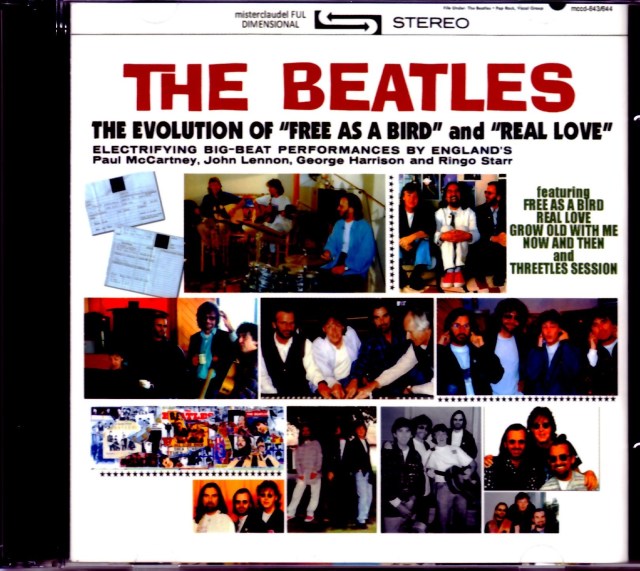

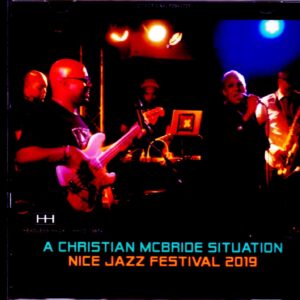
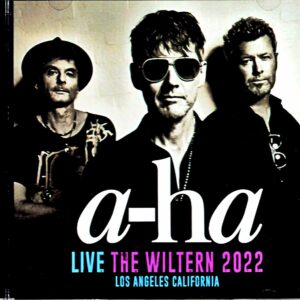
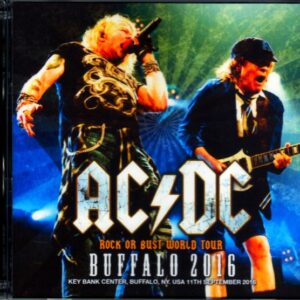
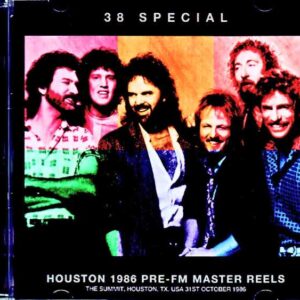
Reviews
There are no reviews yet.